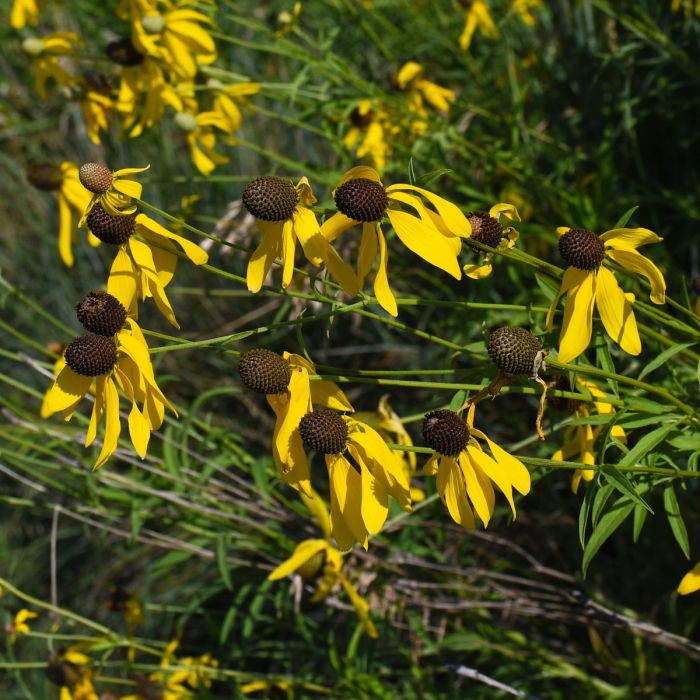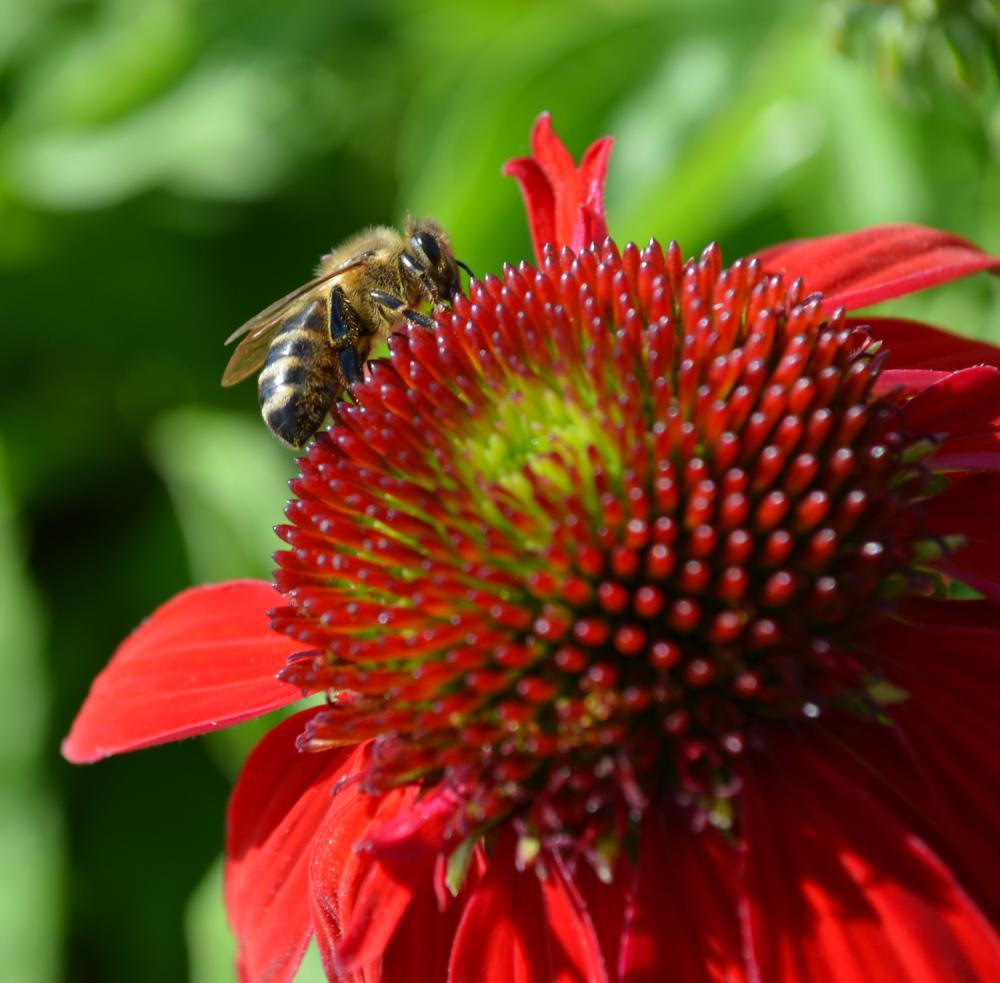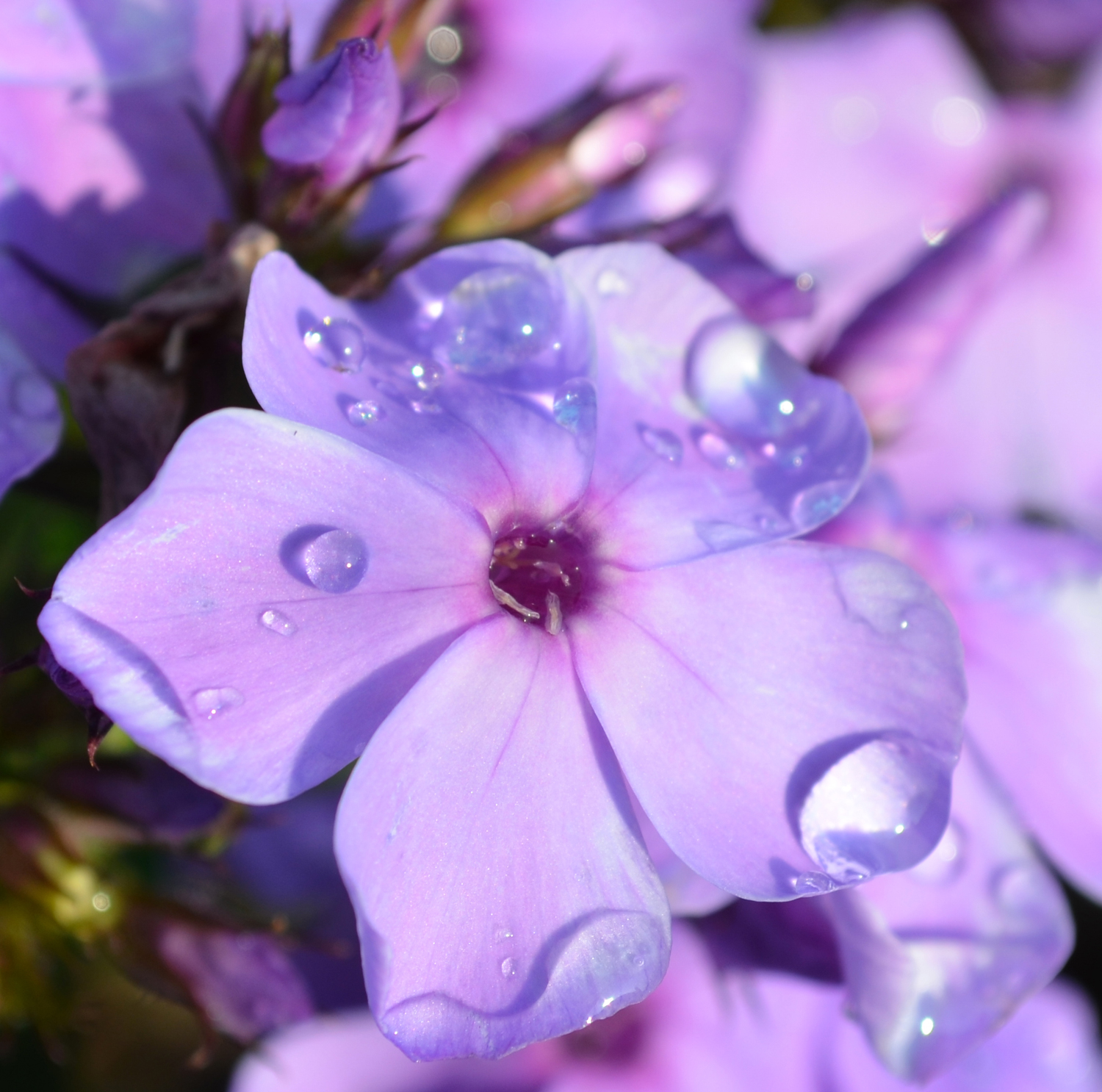Ratibida, Yellow Coneflower 'Minnesota Native'




Out of stock
Coming soon, still growing- Sun Preference
- Full-Sun
- Bloom Time
- July, August, September
Description
This striking prairie flower produces a profusion of bright yellow flowers in the heat of mid-summer. Very durable. Medium to moist soils.
Minnesota's Largest Selection of Perennials
Discover an unparalleled selection of perennials at Gertens! With the largest variety in Minnesota, we offer endless options of colorful perennials, natives, and pollinator plants to beautify your garden year after year. From vibrant flowers to lush foliage, our perennials are perfect for adding beauty and charm to your outdoor space. Visit Gertens today and see why we're known as Minnesota's Destination Garden Center!
Details
Gray-headed Coneflower | Ratibida pinnata
Plant Height: 3 feet
Flower Height: 5 feet
Spread: 24 inches
Sunlight: Full Sun
Hardiness Zone: 3a
Other Names: Grayhead, Yellow Coneflower, Prairie Coneflower
Description:
An erect, clump forming plant with stiff stems, producing masses of long blooming, bright yellow daisy flowers with gray capped, dark brown cones at the center; an excellent border or naturalizing plant that is very adaptable; best when massed
Ornamental Features
Gray-headed Coneflower has masses of beautiful spikes of yellow daisy flowers with dark brown eyes rising above the foliage from early to late summer, which are most effective when planted in groupings. Its narrow pinnately compound leaves remain bluish-green in color throughout the season.
Landscape Attributes
Gray-headed Coneflower is an herbaceous perennial with tall flower stalks held atop a low mound of foliage. Its medium texture blends into the garden, but can always be balanced by a couple of finer or coarser plants for an effective composition.
This is a relatively low maintenance plant, and should be cut back in late fall in preparation for winter. It is a good choice for attracting bees and butterflies to your yard. It has no significant negative characteristics.
Gray-headed Coneflower is recommended for the following landscape applications;
- Accent
- Mass Planting
- General Garden Use
- Groundcover
- Naturalizing And Woodland Gardens
- Container Planting
Planting & Growing
Gray-headed Coneflower will grow to be about 3 feet tall at maturity extending to 5 feet tall with the flowers, with a spread of 24 inches. Its foliage tends to remain dense right to the ground, not requiring facer plants in front. It grows at a medium rate, and under ideal conditions can be expected to live for approximately 5 years. As an herbaceous perennial, this plant will usually die back to the crown each winter, and will regrow from the base each spring. Be careful not to disturb the crown in late winter when it may not be readily seen!
This plant should only be grown in full sunlight. It prefers dry to average moisture levels with very well-drained soil, and will often die in standing water. It is not particular as to soil pH, but grows best in poor soils. It is highly tolerant of urban pollution and will even thrive in inner city environments. This species is native to parts of North America. It can be propagated by division.
Gray-headed Coneflower is a fine choice for the garden, but it is also a good selection for planting in outdoor pots and containers. With its upright habit of growth, it is best suited for use as a 'thriller' in the 'spiller-thriller-filler' container combination; plant it near the center of the pot, surrounded by smaller plants and those that spill over the edges. It is even sizeable enough that it can be grown alone in a suitable container. Note that when growing plants in outdoor containers and baskets, they may require more frequent waterings than they would in the yard or garden. Be aware that in our climate, most plants cannot be expected to survive the winter if left in containers outdoors, and this plant is no exception. Contact our experts for more information on how to protect it over the winter months.
More Information
| Common Family Name | Coneflower |
|---|---|
| Gerten Grown Plants | Gerten Grown Plants |
| MN Native Plants | MN Native Plants |
| Sun Preference | Full-Sun |
| Bloom Time | July, August, September |
| Mature Spread (Range) | 12" - 24" |
| Mature Height (Range) | 37" - 48" |
| USDA Hardiness Zone | 3, 4, 5, 6, 7, 8 |


